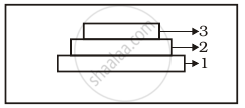Advertisements
Advertisements
Question
Answer the following question.
"The size of a population for any species is not a static parameter." Justify the statement with specific reference to fluctuations in the population density of a region in a given period of time.
Solution
The size of a population of any species is not a static parameter. It keeps changing in time, depending on various factors including food availability, predation pressures, and weather.
The population density in a given period can fluctuate due to the following four factors:
- Natality: It refers to the number of births during a given period in the population that are added to the initial density.
- Mortality: It refers to the number of deaths during a given period that reduced the size.
- Immigration: It is the number of individuals of the same species that have come into the habitat from elsewhere during the given period.
- Emigration: It is the number of individuals who left the habitat and have gone elsewhere.
RELATED QUESTIONS
Represent diagrammatically three kinds of age-pyramids for human populations.
"Analysis of age-pyramids for human population can provide important inputs for long-term planning strategies." Explain.
Animals that can move from fresh water to sea called as ________.
Give an account of population regulation.
Population having large number of postreproductive and small number of prereproductive age group is called
`"dN"/"dt" = "rN" (("K"- "N")/"K")` in logistic growth "K" represents:
What parameters are used for tiger census in our country’s national parks and sanctuaries?
Which of the following would necessarily decrease the density of a population in a given habitat?

Label the three tiers 1, 2, 3 given in the above age pyramid.
Comment on the following figures: 1, 2 and 3:
A, B, C. D, G, P, Q, R, S are species

